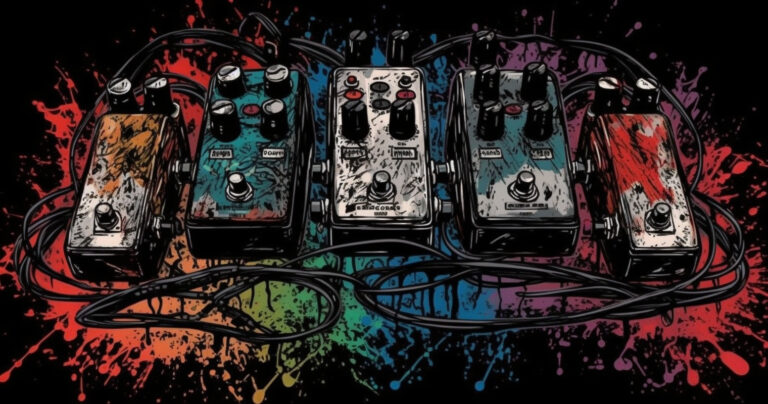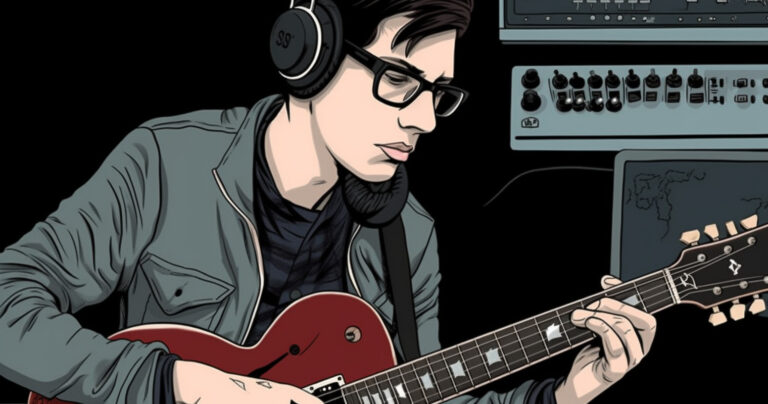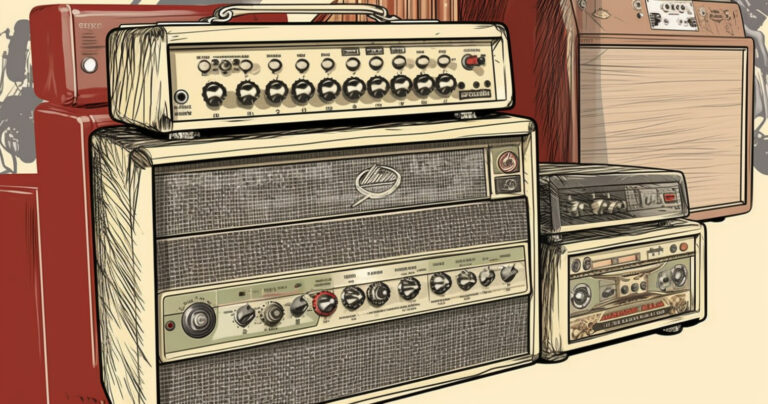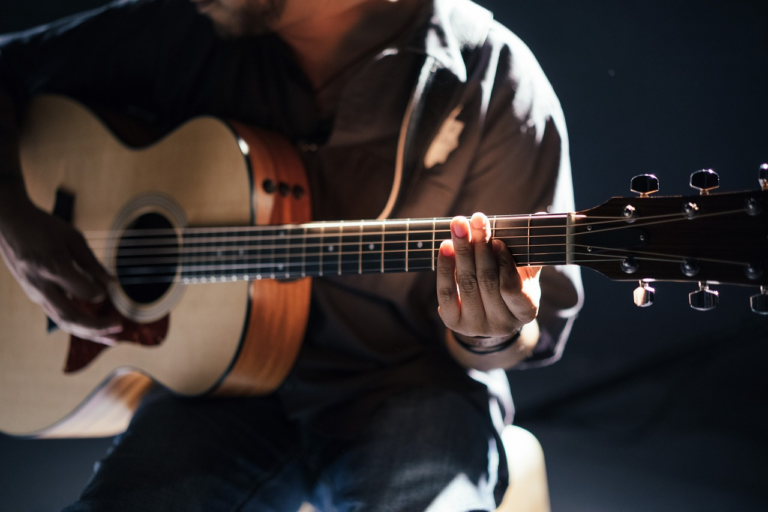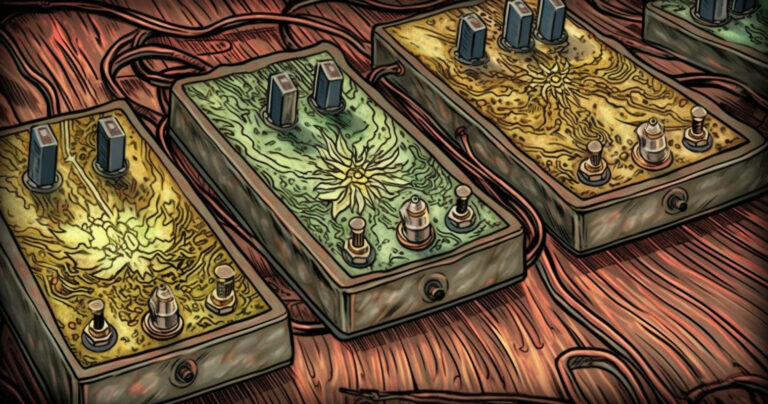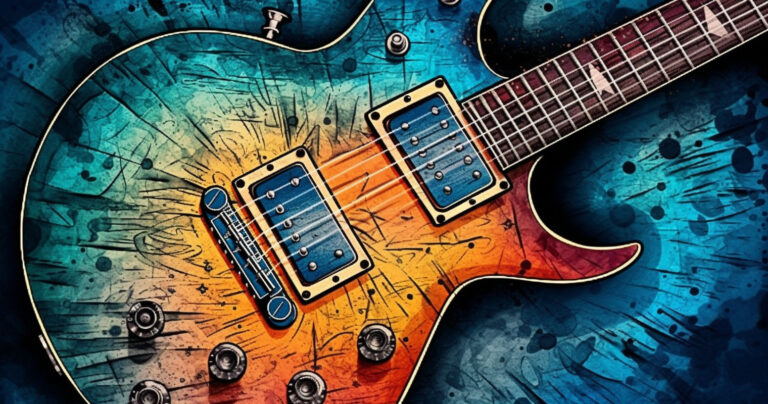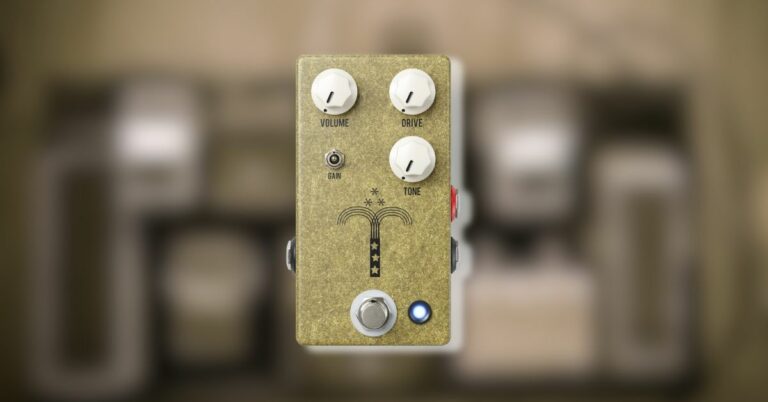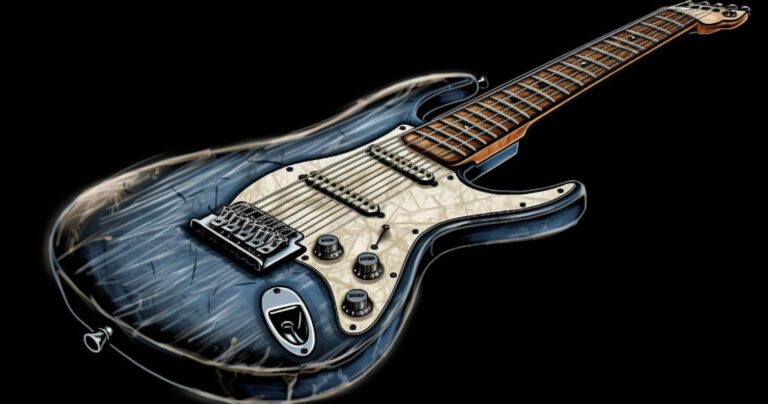As a beginner guitarist, it can be overwhelming to navigate the world of guitar pedals. However, it won’t be long until you have 50 pedals laying around your room and you spent $5000 on pedals to play on your $300 guitar. Its the way it goes.
Adding the right pedals into your setup can completely transform your tone. It can absolutely take your playing to the next level, even give you some confidence. One thing about a totally dry signal is that you can hear every mistake. So the sound pedals can help you hide some of the small details.
Adding effects like distortion, delay, and chorus to create a unique sonic palette. By experimenting with different pedals, you can find the a combination that gives you a tone that fits your playing style and musical preferences.
Overdrive Pedal: Adding Crunch to Your Sound
overdrive pedals are great beginner guitar pedals and help you achieve a powerful and dynamic sound. These pedals are designed to mimic the sound of an overdriven tube amp, which is a staple of classic rock, blues, and punk music. The warm and natural distortion produced by these pedals is perfect for adding character and depth to your playing, and can take your sound from dull to electrifying in no time.
One of the key features of overdrive pedals is their ability to control the gain and tone of your sound. By adjusting the gain, you can add just the right amount of saturation to your signal, allowing you to create everything from subtle overdrive to full-blown distortion. The tone control, on the other hand, allows you to fine-tune the EQ to match your guitar and amp, ensuring that you get the perfect sound for your particular setup.
Overdrive pedals “break up” as you add more gain. This gives you a unique sound that’s different from simply adding distortion to your signal. You can dial in a wide range of tones and textures, from a smooth and creamy sound to a gritty and raw one. And because most overdrive pedals are capable of producing both classic and modern high-gain tones, they’re incredibly versatile and can be used in a variety of musical genres. Just keep in mind that there are OD pedals that tend to be better at high gain than others.
Overdrive pedals help you keep dynamics. That means that you can turn them down, turn down the volume of your guitar and still play a soft tone. When you turn everything up, you can hit them hard and get that good loud, punch-you-in-the-face sound. They are easy to use, highly customizable, and can help you achieve a wide range of sounds and styles. So if you’re looking to add some grit and character to your playing, ther are hundreds of overdrive pedals to choose from.
Distortion Pedal: Adding Grit and Grind to Your Sound
Distortion pedals, on the other hand, are designed to create a more extreme, aggressive sound so you will generally hear a heavy distortion even with the gain turned low. This is quite different than an overdrive pedal. A distortion pedal is a popular effect used by guitarists in a variety of genres, from punk to hard rock to metal. The pedal distorts the guitar signal, creating a gritty, aggressive sound that’s perfect for power chords, riffing, and solos. For a subtle crunch or a full-on sonic assault, a distortion pedal can add a new dimension to your playing and take your sound to the next level.
Distortion pedals have controls for gain, tone, and volume. Some will have switches that change the nature of the distorted sound. These pedals can create a massive, aggressive sound that’s ideal for chugging power chords and shredding solos. With their high levels of gain and distortion, they can also be used for more experimental and avant-garde styles of music. Experiment with different settings and find the sound that works best for your playing style.
Whether you’re playing in a band or just jamming at home, a distortion pedal is a great beginner guitar pedal for a new guitarist that wants to totally change the sound from a basic amp. It’s also worth noting that these work particularly well on any kind of amp. Many beginner guitar amps often won’t have a great distortion sound and need a pedal.
Tuner Pedal: Great Beginner Pedals for Tuning
Tuner pedals aren’t sexy, but once you have one, you will not know how you lived without it. While there are some great devices like snarks, that you can clip on your guitar headstock, its super convenient to just hit a pedal and be able to tune your guitar. While some guitars stay in tune better than others, guitars come out of tune frequently, especially when you change strings. Keeping your guitar in tune is crucial for producing a clean, accurate sound, and a tuner pedal makes the process much easier.
Simply plug your guitar into the pedal and tune each string until it’s perfectly in tune. Tuner pedals often have additional features like LED displays, true bypass, and multiple tuning modes, making them versatile tools for any playing situation. In addition to basic tuning, many tuner pedals also offer additional features that can be useful for guitarists. For example, some pedals have a true bypass function that allows you to switch the pedal on and off without affecting the sound quality of your guitar. Make sure you get a tuner pedal with true bypass. Others have multiple tuning modes, such as chromatic, drop-D, and open tuning, making it faster to use those tunings. While its a mandatory for a gigging musician, tuner pedals are still a great beginner guitar pedal.
Reverb Pedal: Adding Depth and Space to Your Tone
A reverb pedal is an essential tool for any guitarist who wants to explore the full potential of their sound. With this pedal, you can create a sense of depth and space that adds richness and complexity to your playing. Unlike other effects pedals, which alter the fundamental sound of your guitar, a reverb pedal simulates the natural sound of a guitar being played in a large space, such as a concert hall or cathedral. This sound makes the reverb pedal a great beginner guitar pedal and the next pedal I would suggest after some kind of overdrive or distortion.
Reverb pedals come in different types, each with its own unique sound. Plate and spring reverbs are two popular types that offer different levels of decay time and pre-delay. Hall and room reverbs, on the other hand, are designed to replicate the sound of a guitar being played in a larger space, such as a concert hall or a recording studio.
One of the great things about a reverb pedal is that it allows you to experiment with a wide range of ambient sounds. By adjusting the decay time, pre-delay, and other parameters, you can create subtle room sounds or cavernous, atmospheric echoes. You can also adjust the amount of reverb to suit your playing style, from a subtle, understated effect to a more prominent, dramatic sound. Whether you’re playing clean arpeggios or distorted power chords, a reverb pedal can add a new dimension to your sound. It can make your guitar sound more expansive and immersive, creating a sense of depth and space that draws listeners in.
Delay Pedal: Creating Echoes and Ambience
A delay pedal is another great beginner guitar pedal. These pedals create a repeating echo of your guitar signal, adding depth and ambience to your sound. You can adjust the time between repeats, the number of repeats, and the level of the effect to create everything from subtle, slapback echoes to lush, atmospheric soundscapes. Delay pedals can also be used to create rhythmic patterns and loops, allowing you to layer different guitar parts and create complex arrangements. Whether you’re playing clean arpeggios or distorted power chords, a delay pedal can add a new dimension to your playing.
Delay pedals are extremely versatile and can be used in a variety of musical genres, ranging from rock and blues to ambient and experimental music. They can be used to create a sense of space and depth in your playing, allowing you to sound like you’re playing in a larger room or hall. They can also be used to create unique textures and sounds, such as reverse delays or pitch-shifted delays.
When it comes to choosing a delay pedal, there are many options to consider. Analog delay pedals offer a warm, vintage sound, while digital delay pedals offer more precision and flexibility. Some delay pedals even offer both analog and digital modes, giving you the best of both worlds. You will start to notice that delays are often used on solos. For this reason, its one of those pedals that beginner guitarists can often wait until they start playing solos.
Chorus Pedal: Creating a Rich, Full Sound
A chorus pedal is a popular effect used by guitarists to create a rich, full sound. The pedal splits the guitar signal, slightly delaying and modulating one of the signals before blending it back with the original signal. This creates a thicker, more complex sound that’s perfect for clean arpeggios, strummed chords, and melodic leads. Chorus pedals often have controls for rate, depth, and tone, allowing you to dial in the perfect sound for your playing. With a chorus pedal on your pedalboard, you can add a lush, shimmering quality to your sound.
A chorus pedal is one of the most popular guitar effects pedals in the market and a great introduction to the world of modulation pedals. The chorus pedal creates a lush and full sound by splitting the guitar signal, slightly delaying and modulating one of the signals before blending it back with the original signal. When you engage the chorus effect, it creates a subtle, swirling sound that adds depth and dimension to your guitar tone. It is an essential effect that is used in a wide range of music genres, from pop to rock, metal, and even jazz.
One of the most significant advantages of using a chorus pedal is that it can make your guitar sound larger and more expansive. This makes it perfect for creating spacey, ethereal sounds, especially when playing arpeggios or strummed chords. You will often here chorus used on clean sounds. They come with various controls that allow you to customize the depth, rate, and tone of the effect to suit your playing style. This means that you can dial in the perfect chorus sound for your music, whether you are looking for a subtle, shimmering effect or a more pronounced, warbly sound.
Chorus pedals were used quite a bit in 80’s songs, both pop and metal. Many songs by The Police and The Cure use a chorus. You will hear a lot of chorus effects from Nirvana, Metallica, Red Hot Chili Peppers and Dream Theater. Seems like most bands at least had 1 song with a chorus pedal which makes a great beginner pedal to cover one of your favorite songs.
Wah Pedals: Adding Expression to Your Playing
A wah pedal is a classic effect used by guitarists in a variety of genres, from funk to metal. The pedal sweeps a bandpass filter up and down, creating a distinctive “wah” sound that adds expression and emotion to your playing. By rocking the pedal back and forth, you can create a variety of dynamic effects, from subtle filter sweeps to intense, throaty wails. Wah pedals can be used to accentuate solos, create rhythm parts, and add texture to your playing.
While the wah pedal is on of the great beginner guitar pedals, you can often wait on this one until you get good enough to cover famous songs. Wah pedals have been used by iconic guitarists such as Jimi Hendrix, Eric Clapton, and Eddie Van Halen, cementing its place in guitar history.
One of the most popular uses of a wah pedal is during a guitar solo. By gradually increasing the intensity of the filter sweep, the guitarist can build tension and excitement in the solo, creating a memorable and emotional moment. However, wah pedals can also be used in more subtle ways, such as adding a touch of expression to a rhythm guitar part. You will also notice that Kirk Hammett uses wah pedals on a lot of solos and that was the reason I got my first wah pedal. Actually was a Christmas present from my mom along with a Metallica guitar tab book.
The first wah pedal was invented in the 1960s by Brad Plunkett and was originally marketed as the “Cry Baby” wah pedal. These are still available and popular. Since then, there have been many variations and models of wah pedals available on the market, each with their own unique sound and features. Wah pedals are also often used in conjunction with distortion and overdrive pedals to create a more aggressive and powerful sound. They can also be used in combination with other effects, such as delay or reverb, to create even more complex and textured sounds.
Other Pedals
These pedals listed are the core pedals for new guitarists and make for great beginner guitar pedals. There are thousands of other pedals. The pedals listed will get you what you need to create your own sound and will cover 99% of songs. There are a lot of modulation pedals, that really change the sound. Popular modulation pedals include phaser, flanger, tremolo and univibe. Other pedal types to consider include: Boosts, Compressors, EQ and Looper pedals.
It is also well worth noting that in modern times, I recommend that new players get gear with multiple effects. Either a guitar amp that comes with built in effects like the Boss Katana. Otherwise, get an affordable modeler like the NUX MG-30 (which I own and recommend). Both pieces of gear are under $400 and come with almost every popular pedal effect. Lastly, the Zoom MS-70 and MG-50 are great choices for multiple effects on a budget and can be found used for under $100. Multi effects pedals use to really stink but in the last 10 years, these digital effects are so good, you won’t believe it.

